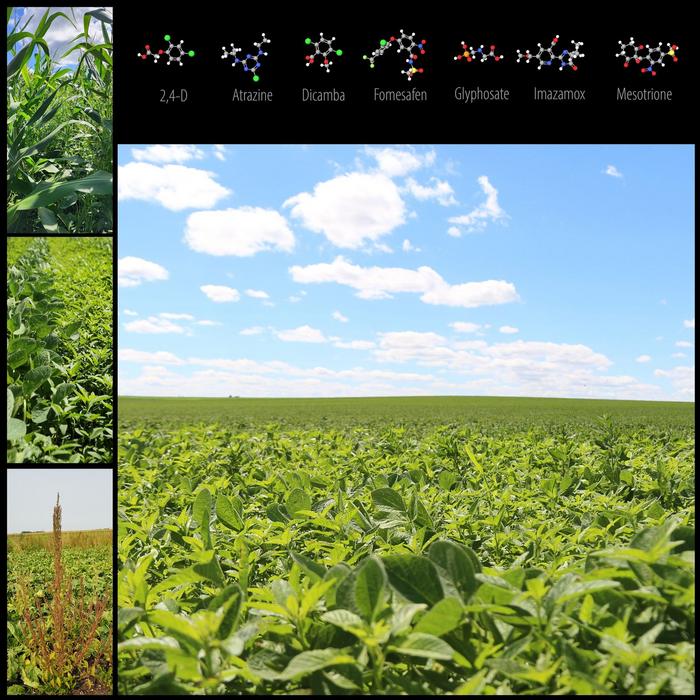The research conducted by a team from Iowa State University, specifically led by scientists Alexis Meadows and Ram (Ramawatar) Yadav, took place on a commercial farm in Gilbert, Iowa. Through rigorous field experiments in 2021 and 2022, the results were striking; the implementation of the seed impact mill reduced the number of germinable waterhemp seeds by an impressive 87% when compared to traditional harvesting methods that did not utilize this technology. Such findings underscore the potential of integrating mechanical weed seed control systems within current agricultural practices, thereby providing soybean farmers with a robust strategy against herbicide-resistant weeds.
The implications of such research are significant—maintaining low seed bank densities in agricultural landscapes is crucial for combatting the spread of herbicide-resistant weed populations, which have been increasingly predominant in Midwestern U.S. fields. With farmers confronted by the dual challenges of maintaining crop yields and managing resistant weed populations, strategies that incorporate innovative mechanical solutions like the seed impact mill could prove invaluable. Researchers estimate that by adopting this technology, the evolution of herbicide-resistant populations could be delayed by as much as five to eight years.
Despite the promising outcomes, Yadav emphasizes a cautious approach towards relying solely on this method. While the seed impact mill serves as a beneficial tool in the integrated weed management toolkit, it must complement existing practices rather than serve as a standalone solution. This sentiment points toward the dangers of overdependence on any single control tactic, which can inadvertently lead to increased weed management failures and the selection of weed biotypes that are adapted to withstand such interventions.
In the broader context of crop management, other non-chemical techniques should also be employed in conjunction with the seed impact mill. Techniques including the deployment of cover crops, such as cereal rye, and the adoption of narrow-row soybean planting methods hold potential for enhancing the overall efficacy of weed management strategies. These practices not only diversify the approach to controlling weeds but also mitigate the risks associated with herbicide resistance.
Furthermore, the study suggests that future research could greatly benefit from exploring the long-term impacts of integrating seed impact mills into established agricultural practices. A thorough examination of how this technology influences the life-history traits of waterhemp, particularly with respect to its seed bank characteristics, could yield insights that enhance our understanding and management of resistant weed populations.
Innovations such as these underscore the evolving landscape of agricultural practices in the face of growing herbicide resistance. They highlight the necessity of a multifaceted approach—one that combines mechanical, biological, and chemical controls—to effectively safeguard crop harvests while minimizing the ecological consequences of weed management efforts. This paradigm gently nudges farming practices toward sustainability and resilience, fostering a system that can adapt alongside challenges brought forth by an increasingly variable climate and resistant weed biotypes.
Enhanced understanding and education on the importance of integrated weed management strategies are essential for optimizing the benefits of advancements such as seed impact mills. As agricultural challenges continue to unfold, collaboration between research institutions, farmers, and agricultural organizations will be necessary to share knowledge, refine practices, and support the adoption of comprehensive weed management solutions.
Collectively, these findings not only pave the way for innovative solutions in weed management but also reinforce the notion that the agricultural sector must remain vigilant and responsive to the ever-changing dynamics of pest management. Employing cutting-edge technology within a context of sustainable practices could promote healthy ecosystems while ensuring food security in the face of weed resistance.
As research into these methodologies progresses and broader adoption occurs, the future of soybean production could be significantly brighter. The ability to manage resistant weed populations effectively will not only enhance the sustainability of crop production but also pave the way for new innovations that further bolster food resilience in the years ahead.
Understanding the intricate relationship between weeds and crop management is paramount. As the fight against herbicide resistance continues, the integration of diverse strategies, including the seed impact mill technology, embodies the forward-thinking approach needed to safeguard agricultural productivity while nurturing ecological balance.
Subject of Research: Not applicable
Article Title: Study Shows Seed Impact Mills Clobber Waterhemp Seed Viability
News Publication Date: 16 January 2025
Web References: https://doi.org/10.1017/wsc.2024.61
References: Not applicable
Image Credits: Credit: Ramawatar Yadav, PhD
Keywords





